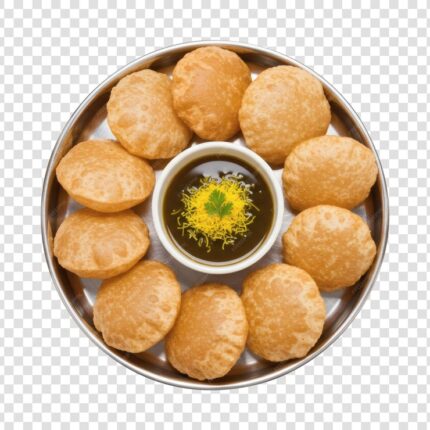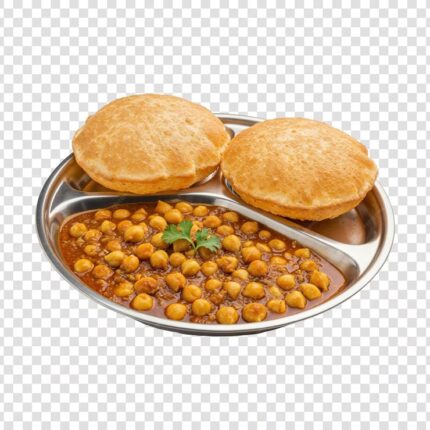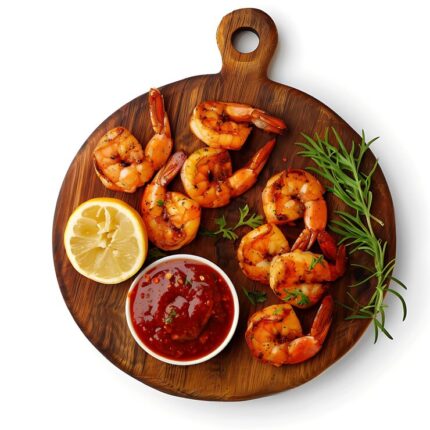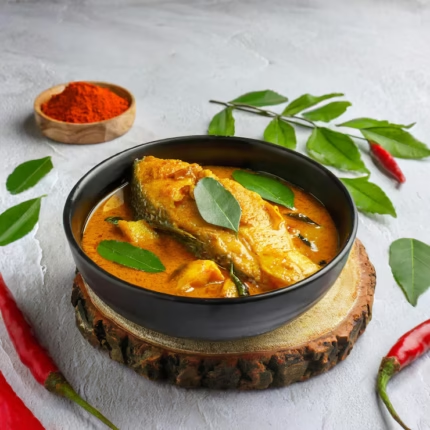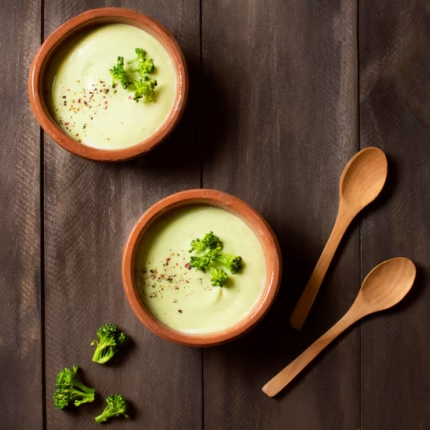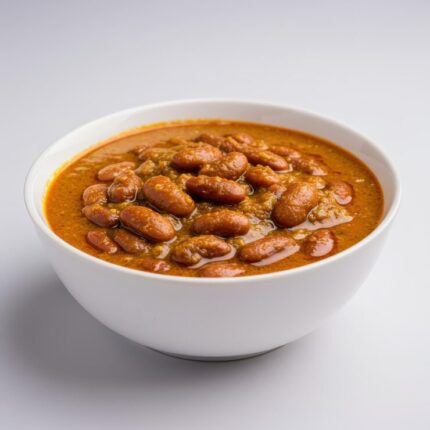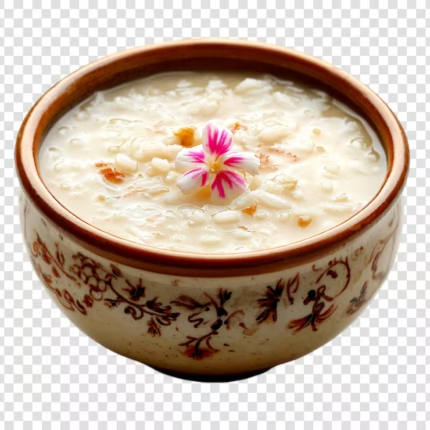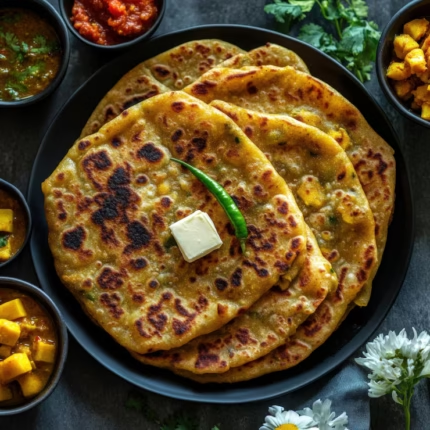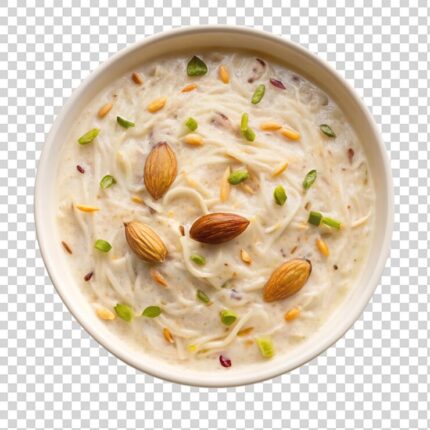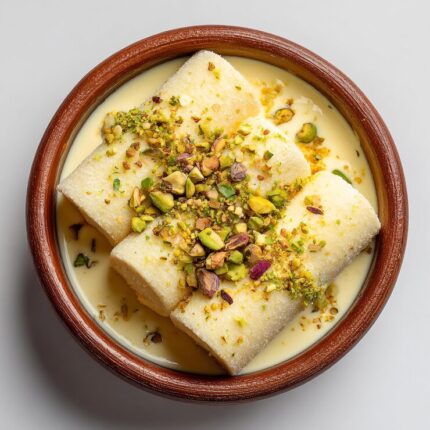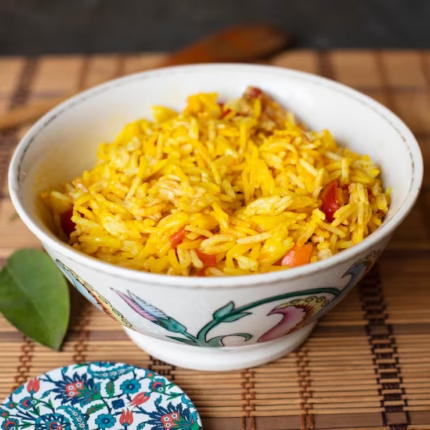Poori Masala
(25 Pcs)
Poori Plain
(25 Pcs)
"Poori is a deep-fried Indian bread known for its light, puffy, and golden-brown appearance. Made from a simple dough of whole wheat flour (atta), water, and a pinch of salt, the dough is rolled into small discs and deep-fried until they puff up beautifully.
Unlike chapati or paratha, poori has a slightly crisp exterior with a soft, hollow interior, making it both fun to eat and perfect for soaking up flavorful curries. It is typically served with dishes like aloo sabzi (potato curry), chana masala (spiced chickpeas), or halwa during festive or special breakfasts.
Plain poori is loved for its comforting texture and indulgent taste. It’s a popular choice for celebratory meals, traditional thalis, and weekend brunches across India."
Poori Sabji
(4 pcs) – Plate
"Poori Sabji is a classic Indian comfort meal that pairs fluffy, deep-fried whole wheat bread (poori) with a mildly spiced, flavorful vegetable curry (sabji), most commonly made with potatoes (aloo). It is a beloved dish across India, especially enjoyed as a special breakfast or festive meal.
The pooris are round, golden, and puffed, made from unleavened wheat dough and deep-fried until light and crisp. The sabji typically features boiled potatoes cooked in a lightly spiced tomato or onion-based gravy, seasoned with turmeric, cumin, green chilies, ginger, and sometimes curry leaves or asafoetida for added aroma.
In some regional variations, the sabji may include peas, carrots, or even a dry-style potato preparation. Served hot, Poori Sabji is a hearty, satisfying dish often accompanied by pickles, curd, or a sweet like halwa. Its comforting flavors and festive feel make it a favorite across generations.
Prawn 
"Indian Prawn dishes are a vibrant part of coastal Indian cuisine, celebrated for their bold flavors, aromatic spices, and succulent texture. Prawns are used in a wide variety of preparations—from spicy curries to dry masala stir-fries—each reflecting the regional diversity of India’s culinary landscape.
Typically cleaned and deveined, prawns are marinated with turmeric, salt, and chili powder, then cooked with ingredients like onions, tomatoes, garlic, ginger, and an array of Indian spices such as cumin, coriander, garam masala, and mustard seeds. Coconut milk, tamarind, or yogurt may be added depending on the region—Goan, Bengali, and South Indian styles being especially popular.
Indian prawn dishes are known for their rich aroma, fiery taste, and quick cooking time. Whether served with steamed rice, roti, or paratha, they offer a delicious balance of heat, tang, and ocean-fresh flavor—making them a favorite among seafood lovers."
Prawn Curry 
"Indian Fish & Prawn Curry is a vibrant, coastal delicacy that brings together the delicate flavors of fresh fish and prawns in a rich, spiced gravy. Common in coastal regions like Kerala, Goa, and Bengal, this curry is a celebration of the sea, infused with local spices and regional flair.
The base of the curry typically features onions, tomatoes, garlic, ginger, and a mix of ground spices such as turmeric, coriander, chili powder, and garam masala. In South Indian versions, coconut milk or grated coconut adds a creamy texture and sweetness, while mustard seeds, curry leaves, and tamarind lend a tangy complexity.
The fish and prawns are gently simmered in the sauce until perfectly tender, allowing them to absorb the aromatic flavors. Served with hot steamed rice or appam, Indian Fish & Prawn Curry is comforting, bold, and satisfying—offering the best of land and sea in every bite."
Rabdi
(0.5 Kg)
"Indian Rabdi (or Rabri) is a rich, creamy, and indulgent dessert made by slow-cooking full-fat milk until it thickens into a luscious, pudding-like consistency. Sweetened with sugar and flavored with cardamom, saffron, and sometimes rose water, Rabdi is a beloved treat in North Indian cuisine, often served during festivals and celebrations.
As the milk simmers over low heat, the cream that forms on top is continuously collected and folded back into the pot, creating a dense texture with layers of malai (cream). Once thickened, it is garnished with slivers of almonds, pistachios, and saffron strands.
Rabdi can be enjoyed warm or chilled and is often paired with desserts like jalebi, malpua, or gulab jamun. Rich, aromatic, and luxurious, Indian Rabdi is a timeless classic that captures the essence of traditional Indian sweets."
Rajma
"Rajma is a beloved North Indian dish made with red kidney beans slow-cooked in a thick, spiced tomato-onion gravy. Known for its rich, hearty flavor and comforting texture, Rajma is seasoned with traditional Indian spices like cumin, coriander, turmeric, garam masala, and a hint of kasuri methi for a signature depth of flavor.
The kidney beans are soaked, boiled, and then simmered gently in the masala until they absorb all the aromatic goodness — resulting in a dish that's mildly spicy, tangy, and incredibly satisfying.
Served hot with steamed basmati rice (famously called Rajma-Chawal), roti, or jeera rice, this wholesome curry is a favorite across Indian households, especially in Punjabi cuisine. Rajma is not just tasty but also packed with protein and fiber, making it both nourishing and delicious."
Rice Kheer
(0.5 Kg)
"Indian Rice Kheer is a classic and beloved dessert made by slow-cooking rice in milk until it becomes creamy, rich, and fragrant. Sweetened with sugar and flavored with cardamom, this traditional pudding is a festive favorite across India, often prepared during celebrations, festivals, or as a comforting treat.
The dish typically uses basmati rice, which is gently simmered with full-fat milk until soft and thick. It’s then sweetened and enhanced with aromatic cardamom powder, and garnished with chopped nuts like almonds, cashews, and pistachios, along with golden raisins and sometimes saffron for added richness and color.
Served warm or chilled, Rice Kheer is smooth, mildly sweet, and infused with a delicate fragrance that makes it both indulgent and soothing. It's a timeless dessert that evokes warmth, tradition, and the essence of Indian hospitality."
Sattu Paratha
(2 Pcs)
"Sattu Paratha is a traditional and nutritious stuffed flatbread popular in Bihar, Jharkhand, and Eastern Uttar Pradesh. It is made using sattu—roasted gram flour—as the main stuffing ingredient, combined with spices and herbs to create a savory, earthy filling.
The sattu mixture typically includes finely chopped onions, green chilies, ginger, garlic, lemon juice, mustard oil, ajwain (carom seeds), salt, and fresh coriander leaves. This dry yet flavorful stuffing is encased in whole wheat dough, rolled out, and cooked on a hot griddle (tava) with ghee or oil until golden and slightly crisp.
Known for its high protein content and cooling properties, Sattu Paratha is both energizing and easy to digest. It’s commonly served with curd, pickles, or green chutney, and is especially popular as a wholesome breakfast or lunch in rural and urban homes alike."
Sevai
(0.5 Kg)
"Indian Sevai, also known as vermicelli or semiya, is a thin, delicate noodle made from wheat, rice, or millet, used to prepare a variety of sweet and savory dishes across India. Light, quick to cook, and versatile, sevai is a staple in many Indian households.
In its savory form, sevai is typically tempered with mustard seeds, curry leaves, green chilies, and vegetables like carrots, peas, or beans. A dash of lemon juice or grated coconut may be added for extra flavor. It’s a popular choice for breakfast or a light meal, especially in South India.
In its sweet version, sevai is cooked in milk or water with sugar, cardamom, and ghee, and garnished with roasted nuts and raisins. This variation is often served as a dessert or festive treat, commonly known as semiya payasam or sweet sevai.
Soft, flavorful, and easy to digest, Indian Sevai is both nourishing and satisfying—perfect for all ages and any time of the day.
Shahi Tukda
(2 Pcs)
"Indian Shahi Tukda, also known as Shahi Tukra, is a regal Mughlai dessert that translates to ""royal piece."" It features crispy, deep-fried bread slices soaked in fragrant sugar syrup and topped with rich, creamy rabdi (thickened sweetened milk), making it a luxurious treat often reserved for special occasions and festivals.
The dish begins with slices of bread—traditionally white bread—cut into triangles or squares and fried until golden and crisp. These are then dipped in a lightly flavored sugar syrup infused with cardamom, rose water, or saffron. Finally, the bread is generously layered with rabdi and garnished with slivers of almonds, pistachios, and saffron strands.
Soft, crisp, sweet, and creamy all at once, Shahi Tukda is a perfect harmony of textures and flavors. It is rich, indulgent, and a beloved dessert in North Indian and Hyderabadi cuisine, truly living up to its ""shahi"" (royal) name."
Tahri Fried Rice
"Tahri (also spelled Tehri) is a traditional North Indian one-pot rice dish made with fragrant basmati rice, vegetables, and aromatic spices. Often described as a vegetarian cousin of biryani, Tahri is especially popular in Uttar Pradesh, Bihar, and surrounding regions, where it’s cooked in both home kitchens and community feasts.
The dish typically includes yellow rice flavored with turmeric and seasoned with cumin, bay leaves, cloves, and sometimes garam masala. Common vegetables like potatoes, peas, carrots, and cauliflower are added, making it colorful, hearty, and wholesome. The rice and vegetables are cooked together, allowing the spices to infuse every grain with flavor.
Simple, comforting, and nutritious, Tahri is often served with plain yogurt, raita, or pickles. It’s a beloved everyday meal that’s easy to prepare and perfect for a warm, home-cooked experience."
 (+65) 86580023
(+65) 86580023 desitadka.singapore@gmail.com
desitadka.singapore@gmail.com


